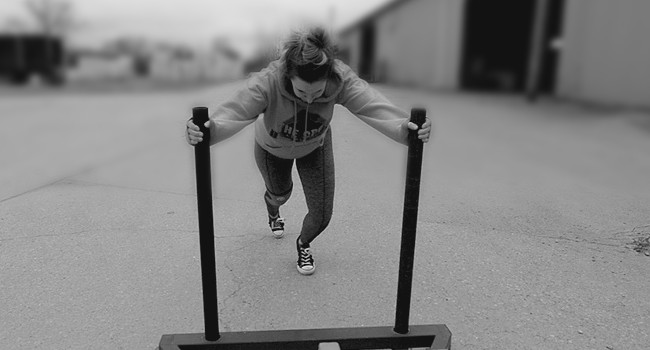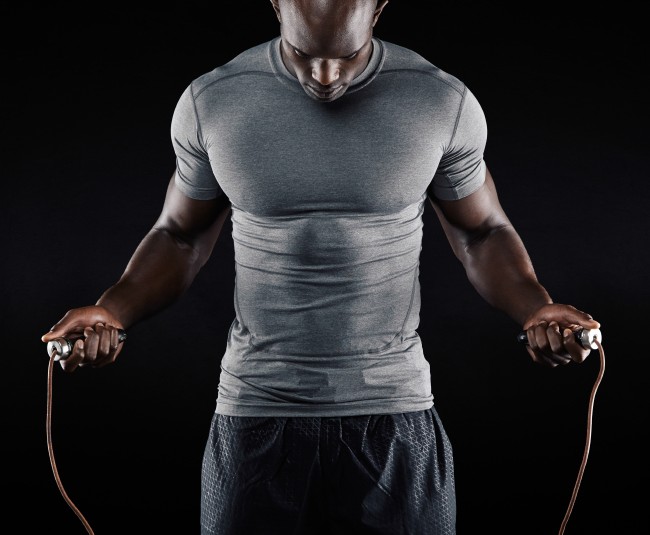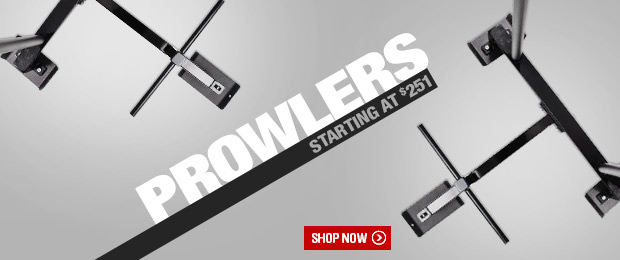
A couple months into 2015 and thousands bolstered their New Year’s Resolutions by doling out cash for gym memberships and trainers. Some even bought new training shoes. The problem, according to university research detailed in a recent Forbes article I read, only 8% succeed. That’s a massive failure rate. No wonder anti-depressants are considered the number two most commonly prescribed drugs in the United States. If you set out to shed some pounds this year and are the 8% who succeeded, then pat yourself on the back and feel free to move on. This article is for the other 92%. Here’s my take on the best ways to incinerate fat.
Kiss Traditional Cardio Equipment Goodbye
I dream of owning my own gym someday. I know it’s not a lucrative business endeavor. I enjoy fantasizing about outfitting a warehouse with all my favorite pieces of equipment. The best part would be the section designated CARDIO. It would be void of ellipticals, treadmills, and stationary bikes. Why? I lean towards other equipment for achieving improved body composition. Case in point: the person whose training regimen consists exclusively of traditional cardio equipment and they physically look the exact same today as they did three years ago. Steady state cardio in particular is my least favorite.
EPOC Explained
Excess Post-Exercise Oxygen Consumption (EPOC) is a measurably increased rate of oxygen intake following strenuous activity. A number of studies sought to measure this effect coupled with an increased metabolic rate. Some found measurable effects existed up to 38 hours post-exercise. Furthermore, a correlation existed between the form and intensity of the exercise and the amount in which EPOC was elevated.
EPOC is fascinating to me, particularly in light of the way in which fat is expelled from the body. Excess dietary consumption is stored as triglycerides in the body, therefore when trying to lose fat you’re essentially seeking to metabolize triglycerides. Triglycerides are comprised of three atoms: carbon, hydrogen and oxygen. Triglyceride molecules must uncouple in order to break down, or in other words go through a process of oxidation. Researchers followed the path in which these atoms left the body and discovered 84% were converted and excreted as carbon dioxide via the lungs while the other 16% became H2O and were excreted as sweat or urine. Want to oxidize more fat? Then you need to inhale more oxygen; thus my fascination with EPOC.
Ignite the Fire
What leads to a bunch of oxygen inhalation, carbon dioxide exhalation, and perspiration? Enter my favorite “cardio” exercises:
Prowler
No, I’m not talking about that odd looking Plymouth/Chrysler Prowler convertible from the early 2000’s. Enter "prowler" into the new search bar on elitefts.com. This thing provides a nasty quad pump, a ton of blood pumping, and heart rate elevation. I love it because it’s an eccentric-less exercise allowing for minimal joint stress and low central nervous system stimulation.
In terms of methodology, the load can be increased or decreased based on your specific goals. You can push forward or backwards. I personally tend to rotate between all four: forward, backward, slow/heavy loads and explosive/light loads. Any way you cut it, the best approach necessitates moving the Prowler 30 yards or so, rest for 60-90 seconds, and repeat. I prefer at least four rounds, but suggest adding rounds and/or cutting the 60-90 second rest break as your cardiovascular capacity increases. Gasping for air is a good thing — think fat oxidation and EPOC. Check out some of the lower cost dragging sleds if the Prowler is outside your budget.
Kettlebells
Not something traditionally associated with bodybuilding; Kettlebells provide an excellent conditioning tool. I personally prefer the standard kettlebell swing. Once again you can increase or decrease the load and or the time between rounds of swings to ramp up the intensity. I suggest starting with 10 swings followed by 30 second rest periods performed for a total of 10 rounds. My preference is a lighter weight kettlebell that you can swing with explosiveness for more reps and/or shorter rest breaks. Once again, this non-traditional cardiovascular exercise will get your heart rate up in a hurry. Kettlebells are inexpensive and fairly portable if your gym doesn’t make them available. A heart-pounding workout can easily be done at home.
Jump Rope
I remember learning to skip rope in elementary school and thinking it was for girls. That all changed when I watched Rockyeven if I didn't pick up a jump rope again until 2009. Admittedly, I ascribed to the typical bodybuilder mentality for the first four years of my professional career: lift weights four days/week and perform steady state cardio on the off days. That changed in 2009 while preparing for the then 202-pound Olympia in which I placed fourth. Jumping rope played a major role in my cardio. I often rotated between kettlebell swings, jump rope, and 60 second rest periods. Weighted ropes and/or handles are an option, but really any standard jump rope will work. Jump 60 times as fast as possible, rest 30-60 seconds, and repeat 4-6 times. The number of jumps per round and the length of rest break can be altered to vary the intensity.
Conclusion
The beauty of the aforementioned three forms of conditioning/cardio—Prowler, Kettlebell, and Jump Rope—is that you work hard for a short period of time. This is why they work great as finishers to standard workouts without adding a ton of time to your training session. They ramp up EPOC which aids a favorable shift in fat oxidation for hours afterward. Just remember the greatest EPOC response correlates with the degree of the intensity in which you train. Go hard. Go intermittently. Go home in less than 10-15 minutes of non-traditional cardio!













Awesome to see an old school bodybuilder advocate these methods! I personally have always hated the typical "walk on incline". Sprinting and KB swings have become by only form of cardio.
I was wondering if you have any other ideas for this. I often like to use battle ropes (as I dont have access to a prowler,) and also use kettle bells often. Do you think a battle rope is enough to achieve the same effect?
The gym in which I train has battle ropes, but I admit I've yet to use them. That said, they are an excellent choice for this style of non-traditional cardio and according to the look of exhaustion on people's faces afterwards tells me it will serve the purpose of elevating the heart rate quickly.
In terms of other options, sprinting as John mentions is great and requires no equipment. Anything that involves the legs is a great choice as involvement of larger muscle groups will always increase the heart rate more rapidly.
Depending on the surface of the floor in your gym, it is possible to mimic the Prowler with just a single 45lb plate. Essentially lay it flat on the ground, grab the top/sides with both hands and then push/slide it across the gym floor as quickly as possible. Rest 60 seconds and repeat.
Hope this helps!
Mark
Since reading 5/3/1 I've been sprinting hills and jumping rope, or really anything weird, like pushing an car up a slight incline (and I mean slight) in a mostly empty parking lot. I like to cycle sprints too - say 50 yds x 4 sprints one week, the next week maybe 40 yds x 5, the week after 30 yds x 7, and the fourth week go for 50x1, 40x1, and 30x1 to allow a little more recovery. The funny thing is, if I'm feeling a little beat up, I'll do steady state ellipse, treadmill, or stepper mill.
Also, unless you already have great GPP and good mobility, if you're just starting sprints, start slowly with low volume and short sprints....it can be tough on the lower back, knees, and ankles, especially if you're on pavement. You don't want them to affect your lifts by adding too much too fast.
Is it common for bodybuilders to use these methods on the same day as their weight training sessions, or do they keep them to non-lifting days? I have at least heard (I am not a bodybuilder) that some don't like to do things like this after lifting as they want to use the post lift time period to enhance growth and recovery. Just wondering your thoughts on this.
My perception is that most bodybuilders are stuck in the same old thinking in regards to performing hours of steady state cardio vs. HIIT. I also differ with the general consensus which places emphasis on the post lift time to enhance growth and recovery. I believe pre and intra-workout nutrition is more important than post, thus the value I place on Biotest's Plazma, in regards to enhancing anabolism and hypertrophy. As such I don't see a problem with performing a 10-15 minute HIIT session post workout.
Hope this helps and thanks for the question!
Mark
I feel the answer to your question partially depends upon what training phase you are in - ie contest dieting, off-season, etc. I feel there is nothing wrong with performing HIIT post-workout if your intra-workout nutrition is optimized and you're short on time. Due to the short, explosive nature of HIIT I've found it can actually aim muscle and CNS recovery. This might change when under a super strict diet so be cautious not to burn yourself out. From a purely body composition improvement standpoint I can see separating HIIT from main workouts as they will provide another opportunity to optimize insulin sensitivity. In that regard AM HIIT and PM weight training might get you to your goal faster.
I hope this helps!
Mark